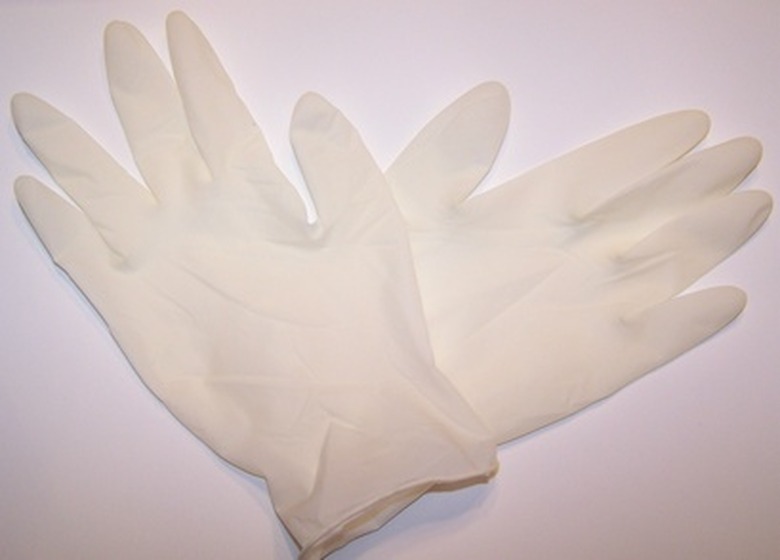Latex Specifications And Properties
Natural and synthetic latex materials are used in several common items, including house paint, medical and surgical gloves, swim caps, mattresses, balloons and contraceptive devices. In a more technical perspective, the word "latex" refers to a scientific reaction where an insoluble liquid or solid material disperses in very tiny particles in a liquid. This dispersion becomes a stabilized form because of a compound called "surfactant," which generally controls and lower a liquid's surface tension. In a more common perspective, latex generally means a special form of rubber that can either be natural and synthetic.
Composition
Composition
Latex is generally made up of around 55 to 65 percent water and 30 to 40 percent of rubber material. It also may contains sugar, resin, protein and ash. When latex is processed into a workable material like a surgical glove, it undergoes exposure to sulfur, carbon black and oil. These materials are used to make the latex stronger and easier to manipulate and use.
Natural Latex Properties
Natural Latex Properties
After preparation, processed natural latex turns into a rubber with an exceptional resistance to wear and tear, great tensile strength, resilience and elongation. It is resistant to common abrasives and works well in low temperature environments; however, latex-based rubbers should be treated with special chemicals and additives because they are easily corroded by heat, sunlight and even oxygen. Latex is not advisable for use in environments where petroleum products and solvents are involved. The most ideal temperature range when using latex is between -55 degrees Celsius and 82 degrees Celsius.
Synthetic Latex Properties
Synthetic Latex Properties
The closest synthetic latex that can be associated with the properties of natural latex is the Styro Butane Rubber (SBR). This type of synthetic rubber can be cheaply produced and has some good properties not found on natural latex materials. It is water resistant and stronger than natural latex, making it an ideal material in producing vehicle tires.
Allergic reactions to Latex
Allergic reactions to Latex
Some people develop an allergy to latex due to constant exposure through inhalation or physical contact. Natural latex contains proteins that sometimes cause reactions in people who use latex materials regularly, like doctors and nurses. The medical industry is trying to create alternatives to latex-based medical items to combat this issue, but as of 2010 there has been no official replacement.
Cite This Article
MLA
Johnson, Steve. "Latex Specifications And Properties" sciencing.com, https://www.sciencing.com/latex-specifications-properties-7678387/. 24 April 2017.
APA
Johnson, Steve. (2017, April 24). Latex Specifications And Properties. sciencing.com. Retrieved from https://www.sciencing.com/latex-specifications-properties-7678387/
Chicago
Johnson, Steve. Latex Specifications And Properties last modified March 24, 2022. https://www.sciencing.com/latex-specifications-properties-7678387/
